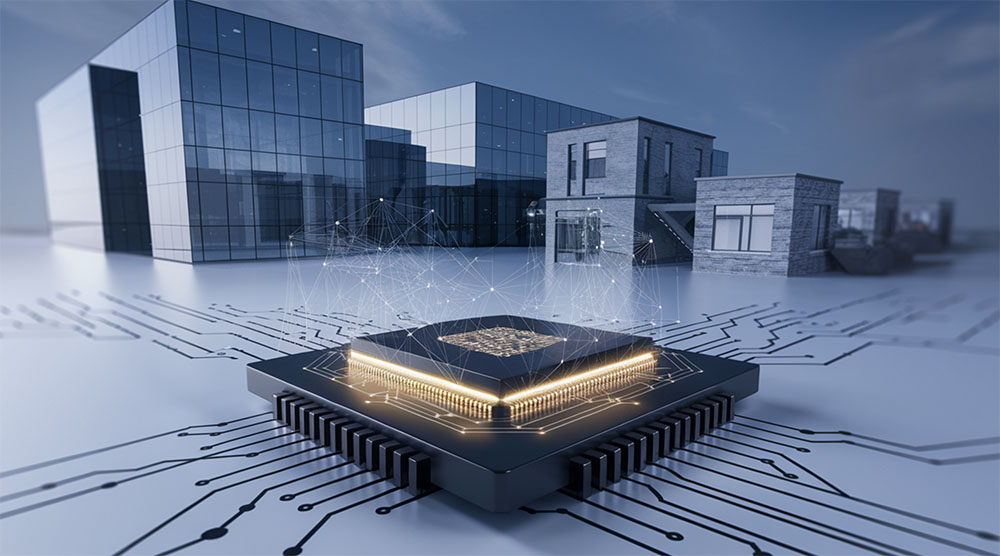Remember when everyone was talking about GPUs being the backbone of AI development? Well, 2024 is bringing a plot twist that’s equally fascinating – if not more so. A new generation of AI-specific chips is emerging, and they’re about to change the game in ways that few saw coming. Just as the transition from CPU to GPU marked a pivotal moment in AI’s evolution, this new shift to specialized AI chips represents another quantum leap in the democratization of artificial intelligence. While GPUs remain crucial to AI development (as we discussed in our previous article), new AI-specific chips are bringing additional advantages…
The Numbers That Tell a Story
Let’s start with some hard facts: the AI chip market, valued at $53.6 billion in 2023, is projected to surge to $71.3 billion in 2024 – that’s a staggering 30% growth in just one year. But the real story isn’t in these numbers alone; it’s in what’s driving them. This explosive growth is fueled by a perfect storm of factors: increasing demand for AI applications, advances in chip design, and a growing recognition that traditional computing architectures aren’t optimal for AI workloads. Traditional semiconductor companies are being joined by ambitious startups, each bringing innovative approaches to chip design and manufacturing. This diversification of the market is precisely what’s driving both innovation and accessibility.
Beyond Traditional GPUs:
The Technical Revolution
Traditional GPUs have been the workhorses of AI development, but new AI-specific chips are bringing three major advantages to the table, each representing a significant leap forward in how we process AI workloads:
- Power Efficiency: These specialized chips consume up to 70% less power than traditional GPU solutions for similar AI tasks. In a world increasingly concerned about energy consumption and environmental impact, this is a game-changer. The reduced power consumption isn’t just about environmental responsibility – it translates directly to lower operating costs and the ability to deploy AI solutions in environments where power consumption is a critical constraint. Some new chips achieve this through innovative architectures that minimize data movement, which is one of the most energy-intensive aspects of AI computation.
- Cost-Effectiveness: With simpler production processes and targeted functionality, these chips are making AI development more accessible to companies of all sizes. We’re seeing startups entering spaces that were previously reserved for tech giants. The cost advantage comes not just from the chips themselves, but from the entire infrastructure required to support them. Traditional GPU-based systems often require sophisticated cooling solutions and power delivery systems, while these new specialized chips can often operate with much simpler support infrastructure.
- Task-Specific Optimization: Unlike general-purpose GPUs, these chips are designed with specific AI workloads in mind. Think of it as the difference between a Swiss Army knife and a specialized surgical tool – each has its place, but for specific tasks, specialization wins. This specialization manifests in various ways: some chips are optimized for inference operations, others for training specific types of neural networks. This specialization allows for remarkable performance improvements – in some cases, offering 10x to 15x better performance for specific AI tasks compared to general-purpose solutions.
The Democratization Effect:
A Closer Look
Here’s where it gets really interesting: this shift is enabling a new wave of innovation that extends far beyond the tech sector. Companies that previously couldn’t afford the massive infrastructure requirements for AI development are now entering the field, bringing fresh perspectives and novel applications. This democratization is occurring across multiple dimensions:
Industry Access
Small and medium-sized businesses are now able to implement AI solutions that were previously out of reach. From healthcare providers using AI for diagnostic assistance to local retailers implementing sophisticated inventory management systems, the applications are diverse and growing.
Geographic Distribution
The lower infrastructure requirements are enabling AI development to flourish outside traditional tech hubs. We’re seeing innovative AI companies emerge from places like Southeast Asia, Eastern Europe, and Africa, bringing unique perspectives and solving local problems with global implications.
Educational Opportunities
Universities and research institutions with limited budgets can now provide hands-on AI development experience to their students, helping to breed the next generation of AI innovators.
What This Means for the Industry:
Broader Implications
The implications of this shift extend far beyond just technical capabilities:
Market Dynamics
- The competitive landscape is being reshaped as smaller players can now compete effectively in spaces previously dominated by tech giants
- New business models are emerging, with some companies offering “AI-chips-as-a-service”
- Investment patterns are shifting, with venture capital flowing to a more diverse range of AI hardware startups
Technical Innovation
- Companies are developing increasingly specialized chips for specific AI applications
- New architectural approaches are being explored, leading to breakthrough innovations
- The focus on efficiency is driving advances in both hardware and software optimization
Environmental Impact
- Reduced power consumption is making AI development more sustainable
- Companies can achieve their AI goals while meeting environmental commitments
- New cooling solutions and infrastructure requirements are being developed with sustainability in mind
Looking Ahead:
The Future Landscape
While traditional GPU manufacturers aren’t going anywhere (they’re actually adapting to this new reality), the diversification of AI chip solutions is creating a more vibrant and competitive ecosystem. This isn’t just about technology; it’s about democratizing AI development and making it accessible to innovators of all sizes. The next few years are likely to bring:
- Further specialization of AI chips for specific applications
- Increased competition leading to more innovation and lower costs
- New development tools and frameworks optimized for these specialized chips
- Novel applications of AI in fields previously considered impractical due to resource constraints
The Bottom Line:
A Transformative Moment
Just as GPUs revolutionized AI development in the past decade, specialized AI chips are set to define the next phase of AI evolution. The difference? This time, the playing field is leveling out, allowing for innovation to come from anywhere, not just the tech giants. This democratization of AI hardware is perhaps the most significant development since the deep learning revolution itself, promising to bring AI capabilities to a much broader range of organizations and applications.
The impact of this transformation will likely be felt for years to come, as more organizations gain access to sophisticated AI capabilities. It’s not just about better technology – it’s about better access to technology, and that’s what makes this revolution truly significant.




